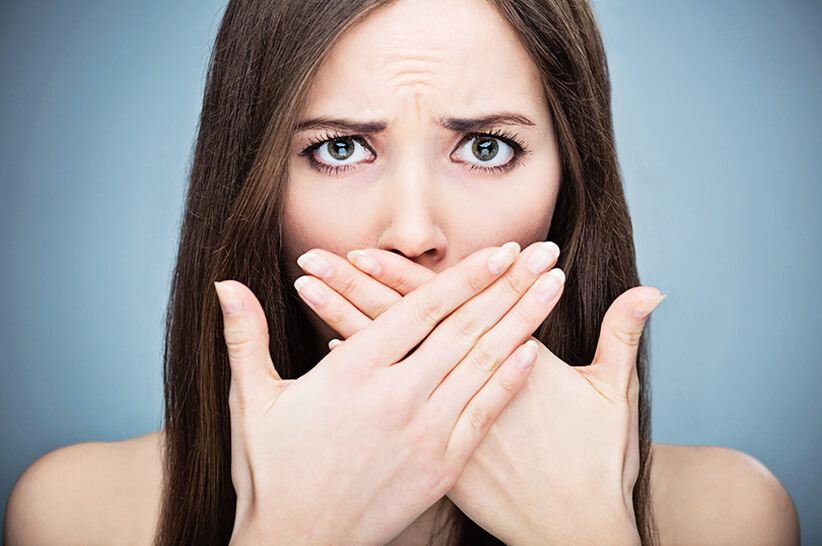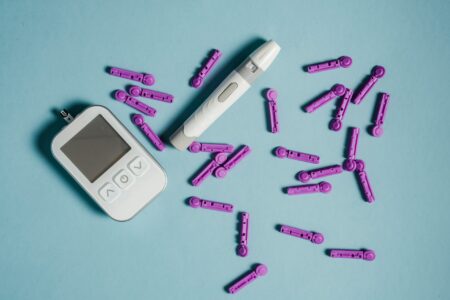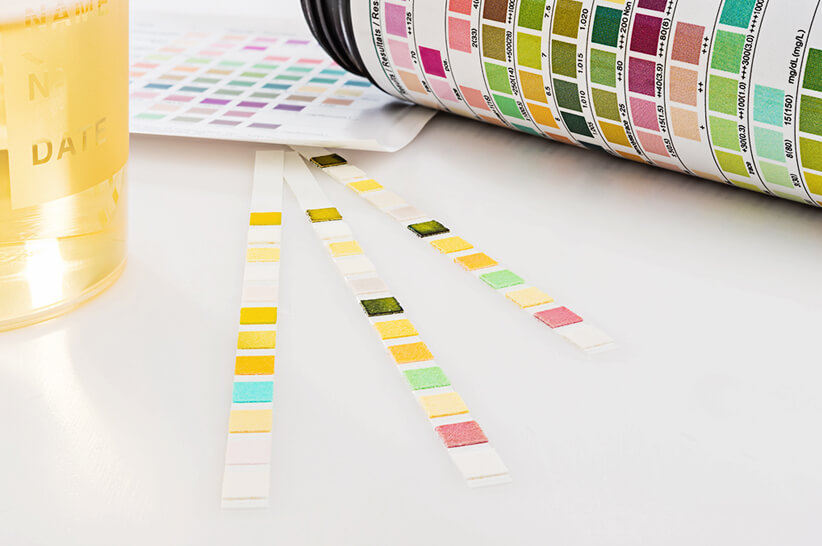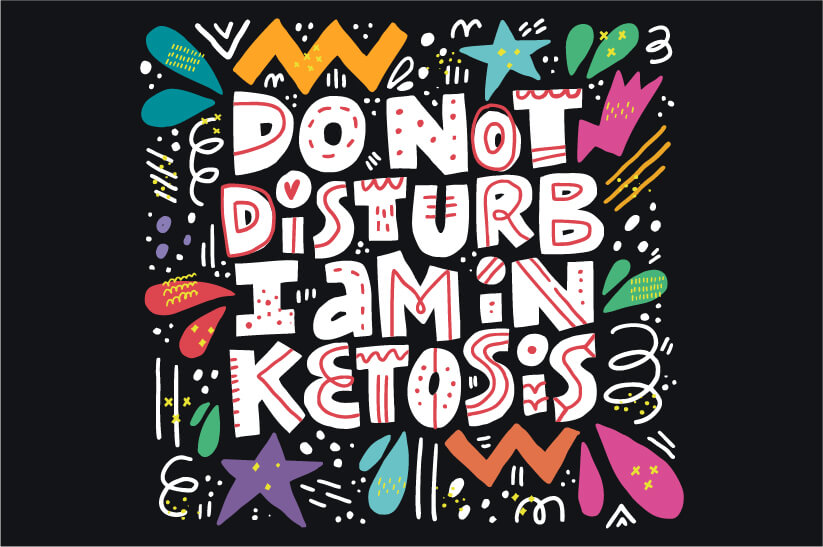The first goal of keto is reaching ketosis, a metabolic state in which the body starts using fat for fuel instead of glucose. Once you’ve made this metabolic shift, expect a host of benefits to come your way: weight loss, sustained energy, and better overall health.
But how to tell if you’re in ketosis?
The surest way to tell is with a simple urine test strip. You can find ketone test strips online and your local pharmacy. A reading of 0.5-3.0 mmol/L means you’re in “nutritional ketosis.” However, it’s also normal to have low readings after a period of keto adaptation, meaning your body becoming so adapted to ketosis that fewer ketones end up as waste in urine.
Another way to tell if you’re in ketosis is by checking for the signs and symptoms.
Below are 9 of the most commonly experienced ketosis signs and symptoms, along with tips on how to treat the more uncomfortable ones.
1. Bad Breath
Also called keto breath, this particular type of bad breath is a hallmark symptom of ketosis. People describe ketosis breath as fruity, sweet, and resembling nail polish remover. It’s mainly a result of the body getting rid of extra acetone (a ketone body) through the lungs.

While it can be embarrassing, having bad breath on keto means your diet is working.
Keto breath also tends to go away on its own once you become “keto-adapted“, which essentially means that your body has started using ketones more effectively and less end up expelled through the lungs.
2. Weight Loss
It’s not uncommon to lose 5 pounds after only one week on the keto diet. But before you get too excited, know this is mostly water weight and that real fat loss will come later.
The reason we lose water on keto is liver glycogen depletion 1. You can expect glycogen depletion on the second or third day of keto 2.
But now you’re wondering, “why would glycogen depletion cause water loss?”
Because glycogen is bound to water (glycogen is three to four parts water), we inevitably lose water along with our glycogen stores.
The good news here is that glycogen depletion sets the stage for ketosis. Having no glycogen signals your body to make the switch from using this glucose reserve to using fat.
3. Increased Ketones in Blood, Urine, and Breath
Despite obvious signs of ketosis, most dieters still ask “Am I in ketosis or am I just imagining things?” Testing for ketone in blood, urine, or breath can remove any doubt.
You can check for all three by using special tests:
- Urine test strips: non-invasive, inexpensive, and easy to use. However, they become less accurate the deeper you are in ketosis.
- Blood ketone meter: will show you exactly how deep you are in ketosis. A reading of 1.5–3.0 mmol/L (15–300 mg/dL) is ideal. However, this tool tends to be invasive and expensive.
- Keto breathalyzer: measures how much acetone your body is releasing. It’s inexpensive and relatively accurate.
4. Short-Term Fatigue
Low energy on keto is another ketosis symptom. Its usual cause is the infamous keto flu.
But what does the keto flu feel like?
Just like regular flu, keto flu causes uncomfortable symptoms like fatigue. But unlike the real flu, this one’s not caused by a viral infection, but by electrolyte imbalances 3.

We already talked about keto causing water loss. Well, if you leave that unchecked, you are putting yourself at risk of these imbalances.
Electrolytes are mostly minerals that regulate fluid levels, heart rhythm, nerve signaling, and countless other bodily processes. They include sodium, potassium, and magnesium. When they become imbalanced due to excess water loss, we can end up feeling tired and ill.
5. Thirst
With water loss and electrolyte imbalances, you may also notice that you’re thirstier than usual. This is because you’re probably dehydrated. Studies show dehydration is an early side effect of the keto diet 4.
Dehydration initially shows as increased thirst and later as dry mouth, infrequent urination, lethargy, headache, dizziness, and dry skin. Dehydration can also put you at risk of kidney stones 5.
To prevent water loss from spiraling out of control, make sure to drink the 11 to 15 cups (2.7 to 3.7 liters) of fluids daily 6.
6. Appetite Suppression
Many keto-ers notice they’re less hungry once in ketosis. There are two reasons for this:
- The keto diet lowers insulin levels, and insulin is an appetite-stimulating hormone 7.
- Ketosis changes the levels of hunger hormones, particularly ghrelin 8.
Insulin is responsible for helping your cells absorb glucose; with less glucose circulating your system, there’s less need for insulin.
Ketones also seem to directly affect the levels of hunger hormones, but researchers are not sure why this happens.
Whatever the reasons, a reduction in appetite is bound to help with weight loss — and that’s a good thing for many dieters.
7. Digestive Issues
Constipation, diarrhea, and stomach ache can accompany ketosis in its early stages. But these are not a direct result of ketosis, and other problems could be the culprit.

Constipation, for example, can be a result of dehydration and electrolyte imbalances 9. You can also become constipated if you’re not eating enough fiber. Low overall food intake can affect bowel movement frequency as well.
Diarrhea can also be a side effect of electrolyte imbalances. But on a keto diet, it’s most likely due to poor digestion or intolerance of fat 10. MCT oil can be another culprit.
8. Insomnia
Studies show that ketosis helps people sleep better 11, 12. Still, a lot of dieters swear they’ve been having trouble sleeping since going keto. So what gives?
Chances are your sleep problems are not caused by ketosis but by electrolyte disturbances, low glucose levels, and changes in gut flora.
Tackling each can help you get your well-deserved rest. Things you can do include drinking electrolyte-rich fluids, reducing carbs slowly, and taking probiotics.
9. Increased Focus and Energy
Ketosis can be energizing and keep your focus razor-sharp, and all thanks to ketones themselves.
Ketones are a much more efficient cell fuel than glucose, using less oxygen and providing more energy 13. But it doesn’t end there: ketones seem to increase the size and number of mitochondria, the powerhouses of cells 14. This too can contribute to greater energy.
Of course, you don’t have to experience all of the above symptoms to be in ketosis. Ketosis can be fairly subtle initially for many, while leading to prominent symptoms in others. When in doubt, testing your ketone levels with test strips or other methods will help you know you’re in ketosis for sure.
Takeaways
- Ketosis is an important keto diet milestone.
- When people enter ketosis, they usually experience symptoms, which can range from mild to severe.
- In most cases, these symptoms spontaneously resolve on their own once you become keto-adapted.
- You can also prevent and treat ketosis symptoms by taking simple measures.
- Testing ketone levels is the most reliable way to check for ketosis.










![Juicing for Weight Loss: Everything You Need to Know [Plus Recipes]](/wp-content/uploads/2019/08/Juicing-for-Weight-featured-image.jpg)








